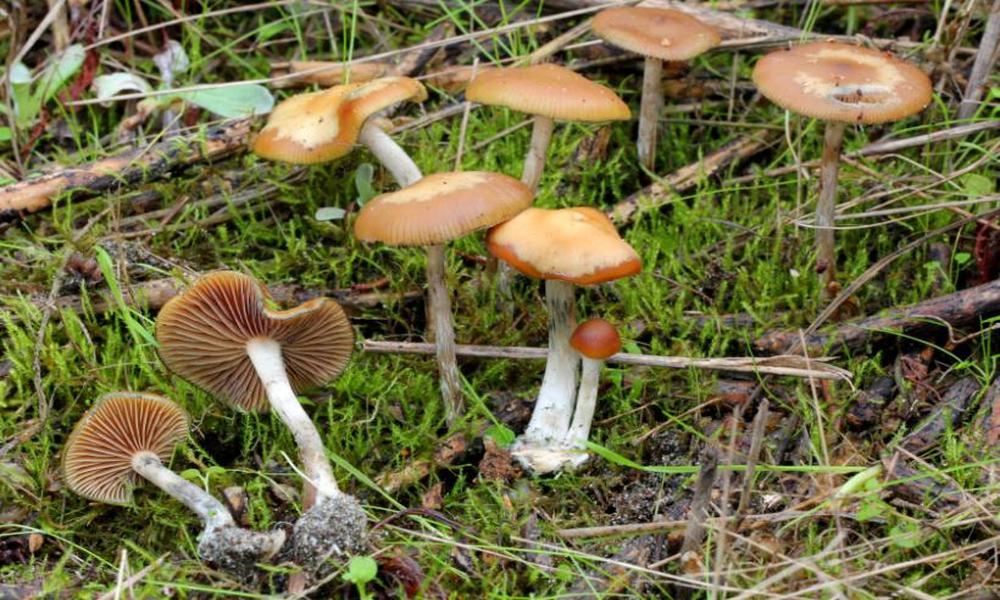Psilocybe cubensis, often referred to as “magic mushrooms,” has captivated the interest and curiosity of people around the world for centuries. These remarkable fungi contain the psychoactive compound psilocybin, which gives them their mind-altering properties. In this comprehensive guide, we delve into the fascinating world of Psilocybe cubensis, exploring its history, effects, cultivation, and safe usage.
History and Cultural Significance
While the use of psilocybin-containing mushrooms dates back thousands of years in various cultures, the specific history of cubensis is less well-documented. The species was first formally described by the American mycologist Franklin Sumner Earle in 1906 as Stropharia cubensis. Later, in 1941, it was reclassified to its current genus by Rolf Singer, a prominent German-born mycologist.
The popularization of psilocybe as a recreational and spiritual substance can be largely attributed to the work of ethnobotanist Terence McKenna and his brother Dennis. In their book “Psilocybin: Magic Mushroom Grower’s Guide,” published in 1976 under the pseudonyms O.T. Oss and O.N. Oeric, the McKenna brothers provided detailed instructions for cultivating cubensis at home, sparking widespread interest in the species among psychedelic enthusiasts.
Effects and Benefits
The primary psychoactive compound in Psilocybe cubensis, psilocybin, interacts with serotonin receptors in the brain, leading to profound alterations in perception, cognition, and emotions. When consumed, magic mushrooms can induce a range of experiences, including visual and auditory hallucinations, altered sense of time, introspection, and enhanced creativity.
Beyond their recreational use, there is growing evidence of potential therapeutic benefits associated with Psilocybe. Research suggests that psilocybin-assisted therapy shows promise in treating mental health conditions such as depression, anxiety, addiction, and PTSD. The psychedelic experience facilitated by these mushrooms is believed to help individuals gain new perspectives, process emotions, and alleviate symptoms.
Cultivation and Identification
For those interested in cultivating cubensis, it’s important to understand the process and guidelines for a successful harvest. Cultivating magic mushrooms involves creating an optimal environment, typically using substrates like rice flour, vermiculite, and brown rice. The cultivation process requires attention to cleanliness, temperature, humidity, and lighting conditions.
When it comes to identification, it is crucial to exercise caution and seek expert guidance. Psilocybe shares similarities with other mushroom species, some of which can be toxic. Accurate identification requires studying the physical characteristics of the mushroom, including its cap, stem, gills, spore color, and growth habitat. Engaging with experienced mycologists or joining mycology communities can be immensely helpful in developing identification skills.
Safe Usage and Considerations
If you choose to consume Psilocybe cubensis or any psychedelic substance, responsible and informed use is essential. Here are a few key considerations:
- Set and Setting: Create a safe and comfortable environment for your psychedelic experience. Surround yourself with trusted individuals in a calm and supportive atmosphere.
- Dosage: Start with a low dose and gradually increase as you become familiar with the effects. The potency of magic mushrooms can vary, so it’s crucial to exercise caution and avoid taking excessive amounts.
- Integration: After the experience, take time to reflect and integrate what you have learned. Journaling, meditation, and discussing the experience with others can aid in integrating insights into your daily life.
- Legal Considerations: Psilocybin mushrooms are classified as controlled substances in many countries. It is important to understand the legal status in your jurisdiction and act accordingly.
Risk Factors and Precautions
While cubensis is generally considered to have a low toxicity profile, it is crucial to be aware of potential risks and precautions. Individuals with a history of mental health conditions, such as schizophrenia or psychosis, should avoid consuming magic mushrooms, as the psychoactive effects may exacerbate symptoms. It is also important to be mindful of personal vulnerability and approach psychedelic experiences with caution.
Conclusion:
Psilocybe cubensis, the magic mushroom, has fascinated humanity for centuries. From their cultural significance to potential therapeutic applications, these fungi continue to intrigue researchers, enthusiasts, and spiritual seekers. However, it is crucial to approach the use of Psilocybe with respect, responsibility and informed knowledge. Whether it’s exploring the history, cultivation, effects, or safe usage, understanding the comprehensive guide to cubensis can help individuals navigate their psychedelic journey with mindfulness and care.



